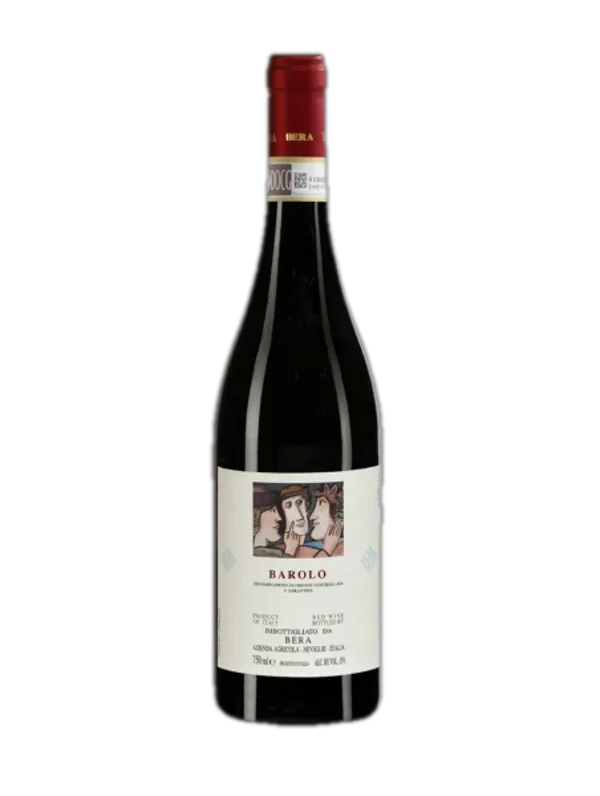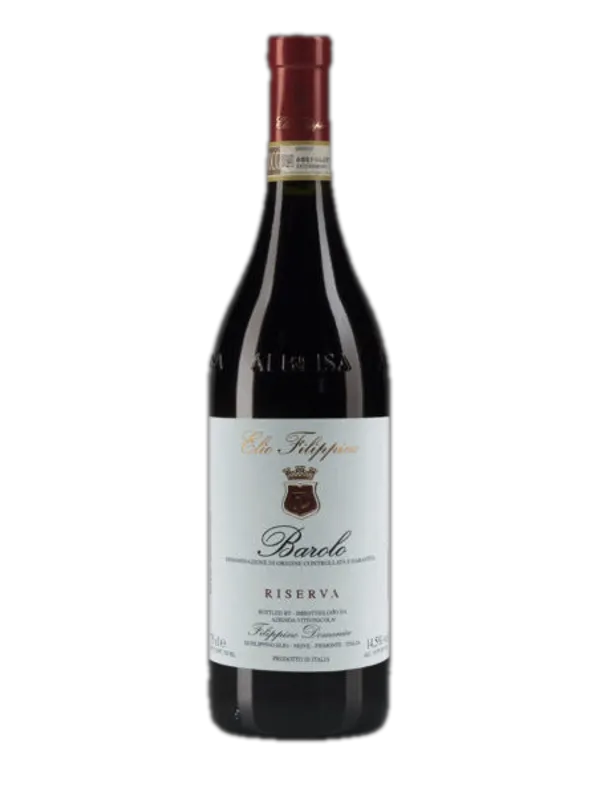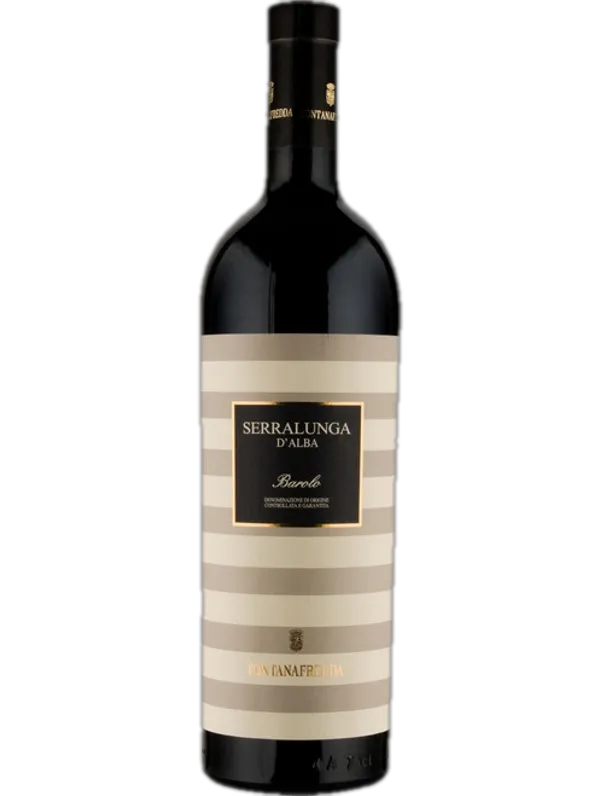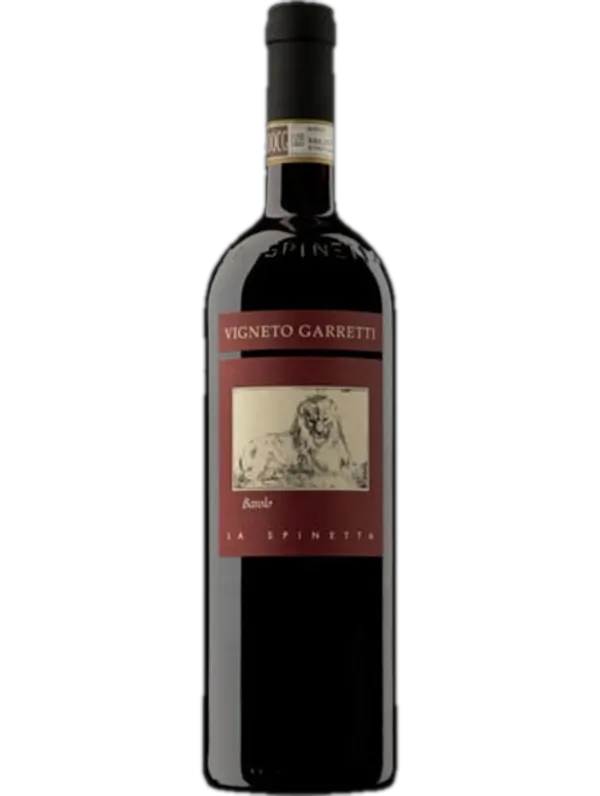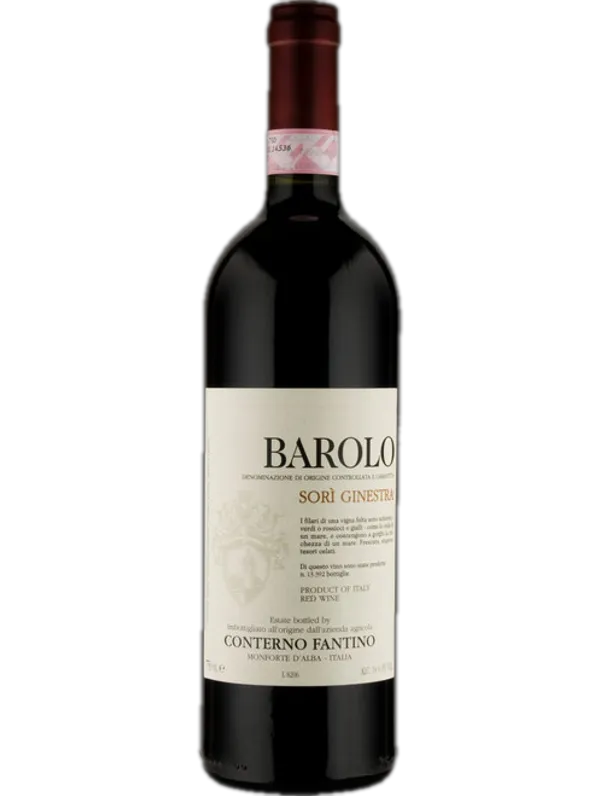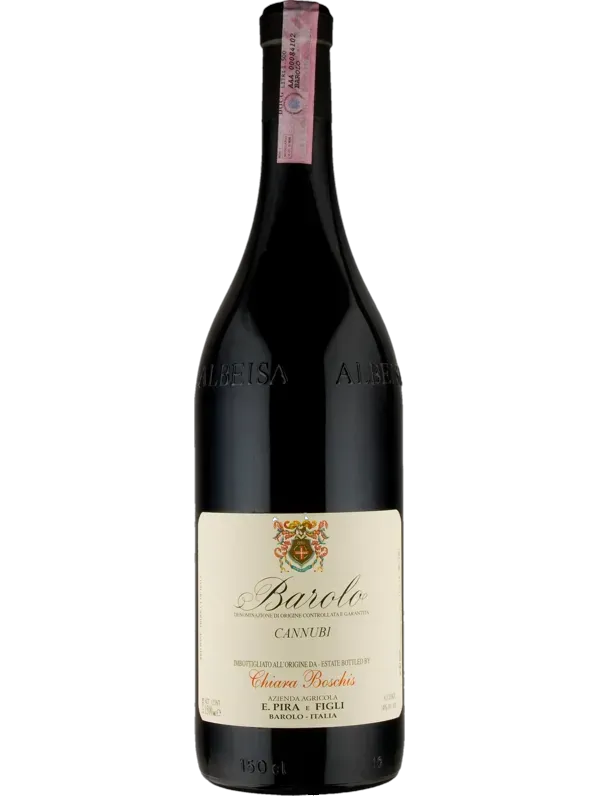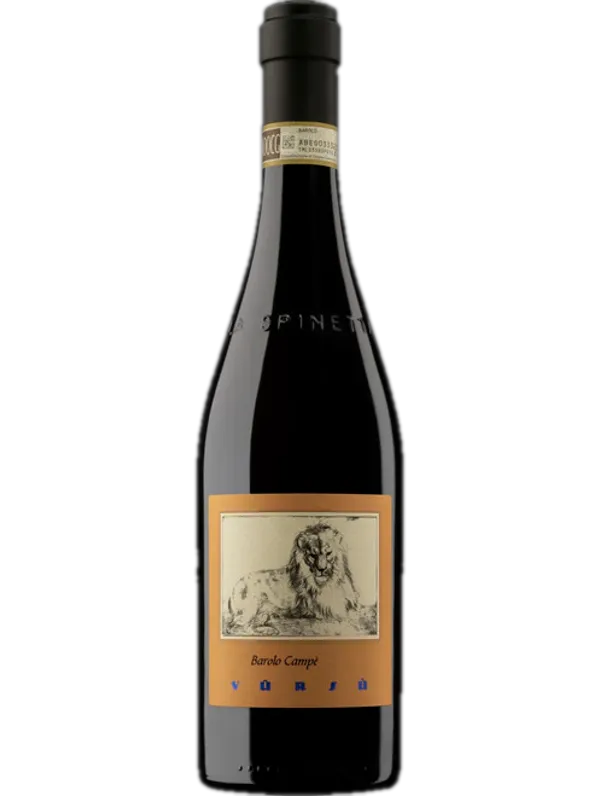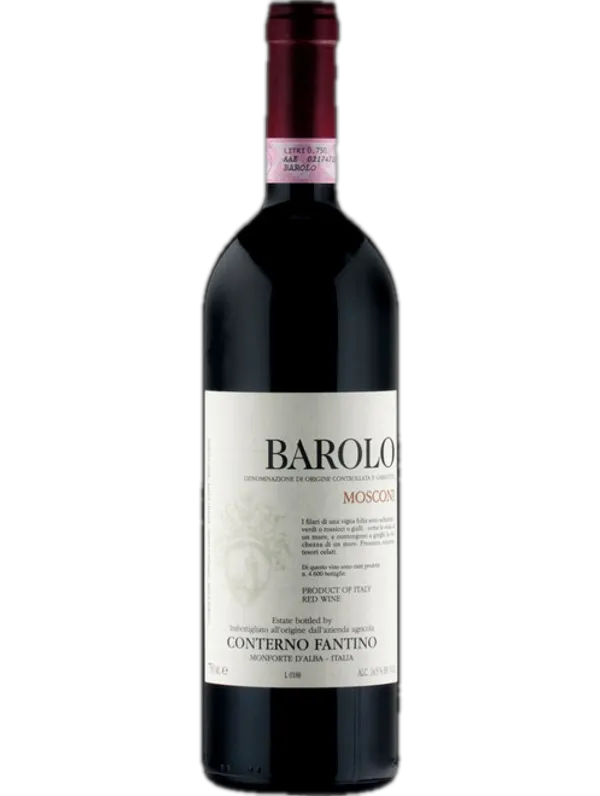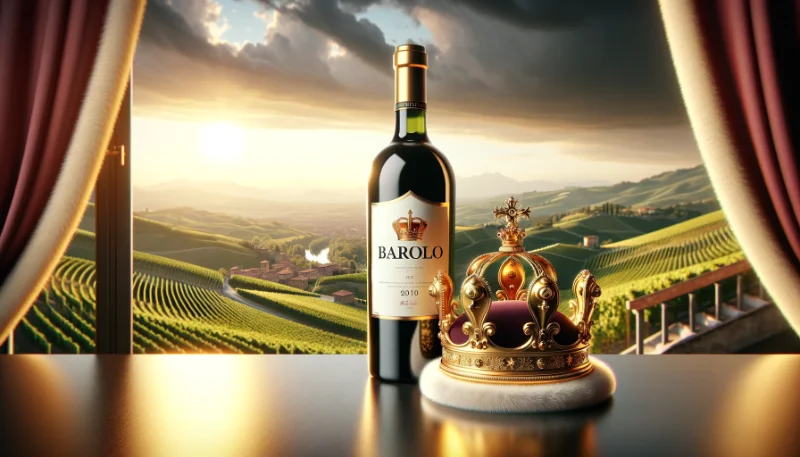
In the world of fine wines, Barolo holds a place of distinction, enchanting wine enthusiasts from the rolling hills of Piedmont to the refined dining tables across the UK. Known affectionately as "the King of Wines", Barolo's allure lies not just in its robust flavour but in the unique tapestry of its origin. It's a wine that narrates a story of terroir, tradition, and the artful finesse of Italian winemaking.
What sets Barolo apart is its remarkable ability to capture the essence of its native landscape. The grapes, nurtured in the distinct climatic conditions of Northwest Italy, develop a complexity and depth that is unmatched. In every sip, there's a whisper of the misty hills of Langhe, the subtle play of seasonal changes, and a richness that can only be attributed to the unique soil that cradles these vines.
For the British connoisseur, savoring a glass of Barolo is akin to embarking on a journey through Italy’s winemaking heritage. It’s a foray into a world where each bottle is a testament to a wine’s capacity to transcend the ordinary, offering a taste experience that is both deeply rooted in tradition and vibrantly alive on the palate. Barolo is more than just a wine; it's a cultural icon, a symbol of winemaking at its best. As we delve deeper into its story, let's raise a glass to the unmistakable character and the enduring legacy of Barolo.
Barolo Wine Specifications (Disciplinare)
Delving into the heart of Barolo's disciplined art of winemaking, the 'Disciplinare' of Barolo is a crucial piece of this wine’s storied identity. The 'Disciplinare di Produzione' for Barolo lays down stringent rules that ensure each bottle maintains the highest quality and authenticity, something that resonates well with the British appreciation for tradition and excellence.
Barolo, a quintessential red wine, is deeply anchored in the Langhe region of Piedmont, a landscape as picturesque as it is fertile. This land, with its rolling hills and ancient soils, has been the nurturing ground for the Nebbiolo grape, the sole architect of Barolo's character.
The visual allure of Barolo is immediately apparent. In its youth, it presents a vivid ruby hue, almost translucent, hinting at the depth and complexity to come. As it matures, this evolves into a more garnet tone, subtly indicating its graceful aging process. This transformation is not just visual; it mirrors the evolving narrative of the wine itself.
Barolo's aging process is a testament to the dedication and patience required to craft such a wine. After a minimum of 18 months in wooden barrels, the wine is aged for a total of at least three years, a period that allows its flavours and aromas to integrate and mature. This slow, meticulous maturation is what imparts Barolo with its distinctive and robust bouquet.
The aromas of Barolo are as captivating as the landscape of its origin. Dominated initially by rich cherry, currant, and raspberry notes, it soon reveals layers of more complex scents like nutmeg, anise, and green pepper. As it opens up, there's a symphony of subtle fragrances - hints of flowers, liquorice, leather, and even the elusive truffle, echoing the rich terroir of the Langhe.

Black Pepper

Burnt Toast

Cherry

Liquorice

Red Forest Berries

Violet
For the British palate, which appreciates both complexity and refinement, Barolo offers an experience that is simultaneously bold and nuanced. Its bouquet is like a carefully curated gallery, each aroma a masterpiece in its own right, yet harmoniously contributing to a greater whole. This is a wine that does not merely accompany a meal; it elevates it, making every dining occasion not just a feast for the taste buds but a journey through the heart of Italian winemaking tradition.
As we explore the intricacies of Barolo, we not only appreciate its robust character but also understand why it has earned the title "the King of Wines". It is a wine that demands attention and respect, much like the ancient hills from which it hails.
Food Pairings with Barolo: A Culinary Symphony
When it comes to pairing foods with Barolo, the rich and complex nature of this regal wine calls for dishes that can match its intensity and depth. In the UK, where a penchant for robust flavours and hearty meals is evident, Barolo finds its perfect culinary companions.
-
 Barolo and red meats are a classic pairing, almost akin to a time-honoured tradition. The wine's robust tannins and rich flavours complement the succulence of red meats beautifully. A well-aged Barolo pairs splendidly with a Sunday roast – think of a succulent beef joint, slow-roasted to perfection. The wine’s structure cuts through the meat’s richness, while its complex bouquet of aromas enhances the savoury depth of the dish.
Barolo and red meats are a classic pairing, almost akin to a time-honoured tradition. The wine's robust tannins and rich flavours complement the succulence of red meats beautifully. A well-aged Barolo pairs splendidly with a Sunday roast – think of a succulent beef joint, slow-roasted to perfection. The wine’s structure cuts through the meat’s richness, while its complex bouquet of aromas enhances the savoury depth of the dish.
 For those favouring Italian cuisine, Barolo is the ideal accompaniment to a brasato al Barolo, where the meat is braised in the wine itself, marrying the flavours in a sublime fusion. It's a dish that not only resonates with the Italian heritage of the wine but also satisfies the British love for rich, comforting stews.
For those favouring Italian cuisine, Barolo is the ideal accompaniment to a brasato al Barolo, where the meat is braised in the wine itself, marrying the flavours in a sublime fusion. It's a dish that not only resonates with the Italian heritage of the wine but also satisfies the British love for rich, comforting stews.
 Cheese is another excellent pairing for Barolo. Opt for aged, hard cheeses like Parmigiano-Reggiano or a mature Cheddar, which can stand up to the wine’s bold character. The sharpness of the cheese contrasts with the wine’s tannic profile, creating a balance that is both elegant and satisfying.
Cheese is another excellent pairing for Barolo. Opt for aged, hard cheeses like Parmigiano-Reggiano or a mature Cheddar, which can stand up to the wine’s bold character. The sharpness of the cheese contrasts with the wine’s tannic profile, creating a balance that is both elegant and satisfying.
 Barolo's versatility also extends to game meats, a choice that would appeal to British tastes known for embracing the flavours of the countryside. Pair it with a venison steak or a rich game pie to experience a delightful harmony of flavours, where the earthiness of the game complements the wine's depth and complexity.
Barolo's versatility also extends to game meats, a choice that would appeal to British tastes known for embracing the flavours of the countryside. Pair it with a venison steak or a rich game pie to experience a delightful harmony of flavours, where the earthiness of the game complements the wine's depth and complexity.
In every pairing, Barolo elevates the dining experience, transforming a meal into a celebration of flavours and traditions. It’s a wine that not only complements the food but also enhances the overall sensory enjoyment, making it a favoured choice for those special meals that call for something truly extraordinary.
Pricing of Barolo Wine: A Vintage Value
Navigating the world of Barolo wines can be akin to a delightful treasure hunt for the discerning British wine enthusiast. The pricing of these esteemed bottles varies, influenced largely by the vintage and the producer. For those looking to indulge in the rich tapestry of Barolo, prices typically start around £20, offering a gateway into this illustrious wine region. However, for connoisseurs seeking the crème de la crème, certain vintages and renowned producers may command prices upwards of £80 to £200 per bottle.
For those with an eye for value, selecting very good vintages, which may not carry the 'exceptional' label yet still deliver on quality, can be a savvy choice. These selections often present a more accessible entry point into the world of Barolo, with prices hovering around £50. This approach allows for the exploration of Barolo's diverse expressions without the hefty price tag of the most sought-after years.
Whether for a special occasion or as a treasured gift, presenting a bottle of Barolo is always a gesture of elegance and appreciation. Its reputation as one of Italy's finest wines ensures that even the more modestly priced bottles carry a sense of luxury and prestige.
In the upcoming showcase, we will delve into a selection of Barolo bottles, each telling its own story of heritage and craftsmanship, offering a range of choices to suit various tastes and budgets.
Bera Barolo
Elegant, garnet red, ethereal, spicy, vanilla and floral notes, full-bodied, well-balanced, long finish, great with game.
Read more
Elio Filippino Riserva Barolo
Aged in French barriques, harmonious with red rose, raspberry, cinnamon, vanilla, strong structure, elegant taste.
Read more
Barolo di Serralunga d'Alba DOCG
Deep red, ruby highlights, vanilla and spice, withered roses, well-balanced, lengthy complex finish.
Read more
Barolo Garretti
Rosehip red, elderberry and rose petals aroma, silky texture, spiced fruit, subtle tannins for immediate enjoyment.
Read more
Barolo Sorì Ginestra, Magnum
Intensely complex Barolo with rich fruit, herbal, and savory notes, perfect for cellaring or savoring now.
Read more

Chiara Boschis - E Pira Barolo Cannubi Organic, Magnum
Deep, bold magnum red displaying aromas of strawberries, leather, white chocolate, and powerful tannins.
Read more
Barolo Campe
Intensely ruby-red Barolo with ripe fruits and integrated wood aromas, balanced palate, supple tannins.
Read more
Barolo, Mosconi Vigna Ped
Intensely complex red with cherry, cranberry, liquorice, and chocolate notes, structured with prominent tannins.
Read more
Barolo’s Cultural and Historical Significance
Delving into the cultural and historical fabric of Barolo, we uncover a rich tapestry that has woven this wine into the very heart of Italian winemaking. Barolo's story, deeply rooted in the Piedmont region, mirrors a saga of tradition, aristocracy, and a relentless pursuit of excellence. Its journey begins about 2500 years ago with the Liguri Stazielli, the earliest known cultivators of vines in this region. Over the centuries, Barolo has captivated many, from the ancient Gauls to the Romans, who were so impressed by the quality of wine from Alba that Julius Caesar reportedly took a sizeable quantity back to Rome.
The first documented mention of Nebbiolo, the grape behind Barolo's magic, dates back to 1268, with the term 'Nibiol' appearing in historical records from the castle of Rivoli. However, it was during the Renaissance that Nebbiolo, and consequently Barolo, truly flourished, thanks to the region's unique climatic conditions and terrain.
The modern era of Barolo began with a marriage – between Carlo Tancredi Falletti di Barolo and Juliette Colbert. Their union marked the start of Barolo's ascent to nobility, with the Marchesa donating 150,000 litres of wine to Carlo Alberto, King of Sardinia. His fondness for this wine led to the purchase of the Verduno estate for its production. The 'Barolo' as we know it today owes much to the Marchesa and Camillo Benso, Count of Cavour, who brought in French oenologist Louis Oudart to refine the winemaking process. This pivotal moment marked Barolo's transformation into a wine revered across Europe and the pride of Piedmontese and Italian viniculture.
Barolo received its DOC (Denominazione di Origine Controllata) recognition in 1966, followed by the coveted DOCG (Denominazione di Origine Controllata e Garantita) status in 1980. This recognition is not just a label but a testament to its consistent quality and the stringent adherence to traditional winemaking practices. The Consorzio, established in 1934 and reconstituted post-war in 1947, and later in 1994 as the Consorzio Tutela Barolo Barbaresco Alba Langhe e Roero, has played a crucial role in preserving and promoting the integrity of Barolo.
To the British wine lover, Barolo is not just another red wine; it is a piece of Italian history, a symbol of winemaking heritage that commands respect and admiration. It is a wine that tells a story, one of royal courts, ancient vineyards, and a relentless pursuit of perfection – a narrative that is as intriguing as the wine itself. Barolo’s historical and cultural significance, intertwined with its unmistakable quality, makes it a revered addition to any wine collection, and a sophisticated choice for those special moments when only the best will do.
FAQs
Why is it called Barolo?
The name 'Barolo' directly ties the wine to its geographical origins. Barolo wine is named after the small town of Barolo in the Piedmont region of Northern Italy. This picturesque town is nestled in the heart of the Langhe, an area renowned for its winemaking tradition and particularly for the Nebbiolo grape.
The naming convention is quite typical in Italian winemaking, where many wines are christened after their town or region of origin. This practice not only indicates the geographical source of the wine but also signifies the unique characteristics imparted by the local terroir. The soils, climate, and topography of the Barolo area are integral to the distinct profile of Barolo wine, which cannot be replicated elsewhere, despite using the same Nebbiolo grapes.
Thus, when one speaks of Barolo, they refer not just to a wine, but to a rich history, a specific place, and a tradition of winemaking that is deeply embedded in the identity of this Piedmontese region. For British wine lovers, the name 'Barolo' conjures up images of the rolling hills and ancient vineyards of Italy, adding an element of romantic allure to each bottle savoured.
What kind of wine is Barolo?
Barolo is a classic Italian red wine made from the Nebbiolo grape. It is best enjoyed with food rather than on its own.
What does Barolo taste like?
Barolo is an intense dry red wine. It is rich in tannins, so very grippy, with high acidity. It has flavours of cherries, violet and leather. It is aged for more than three years, with some bottles aged for much longer.
Is Barolo dry or sweet?
Barolo is a dry red wine. It is an intense yet elegant wine, which is best consumed with food.
Where is Barolo produced?
Barolo is produced in the Piedmont region, in the North-West part of Italy. The vines grow on rolling hills around the village of Barolo, near the city of Alba famous for truffles and chocolate.
What makes Barolo so special?
This noble wine is a quintessential representation of its terroir. Barolo is known for its deep garnet color, which subtly shifts to an orange hue as it ages. On the palate, Barolo offers a complex array of flavours, including hints of cherries, plums, and roses, accompanied by earthy undertones of tar, tobacco, and truffles. Its high tannins and acidity lend it a robust structure, making it both powerful and elegant. Aged Barolo further develops nuanced notes of leather, smoke, and herbs, offering a layered tasting experience.
Why does Barolo have a high price tag?
The pricing of Barolo reflects its prestigious status and the meticulous process involved in its creation. Barolo is made from Nebbiolo grapes, which are notoriously difficult to cultivate. They require specific climatic conditions and careful handling. Additionally, the wine's extended aging process – a minimum of three years, with at least 18 months in oak barrels – adds to its cost. The combination of these factors, along with the wine's storied history and limited production area, justifies its higher price point.
What's the difference between Nebbiolo and Barolo?
Nebbiolo is the grape variety used to make Barolo. It's a grape known for its thin skin, high tannins, and acidity. Barolo, on the other hand, is the wine made exclusively from Nebbiolo grapes in the Barolo region. While all Barolo is made from Nebbiolo, not all Nebbiolo wines are Barolo. Nebbiolo wines from other regions or made in different styles don't share the Barolo designation.
How many types of Barolo are there?
Traditionally, Barolo was known for a single, powerful style. However, modern winemaking techniques have introduced some variation. Today, you might encounter Barolo wines that range from traditional, robust, and tannic to more modern, fruit-forward, and approachable styles, especially in their youth. Additionally, there are 'Riserva' designations for wines aged for at least five years.
How does Barolo differ from Barbaresco?
Both Barolo and Barbaresco are made from Nebbiolo grapes, but they come from different appellations within Piedmont. Barbaresco, generally, is known to be a bit more approachable and softer than Barolo, partly due to the different soil compositions and slightly different microclimates. Barbaresco also has a shorter minimum aging requirement – two years, compared to Barolo's three.


